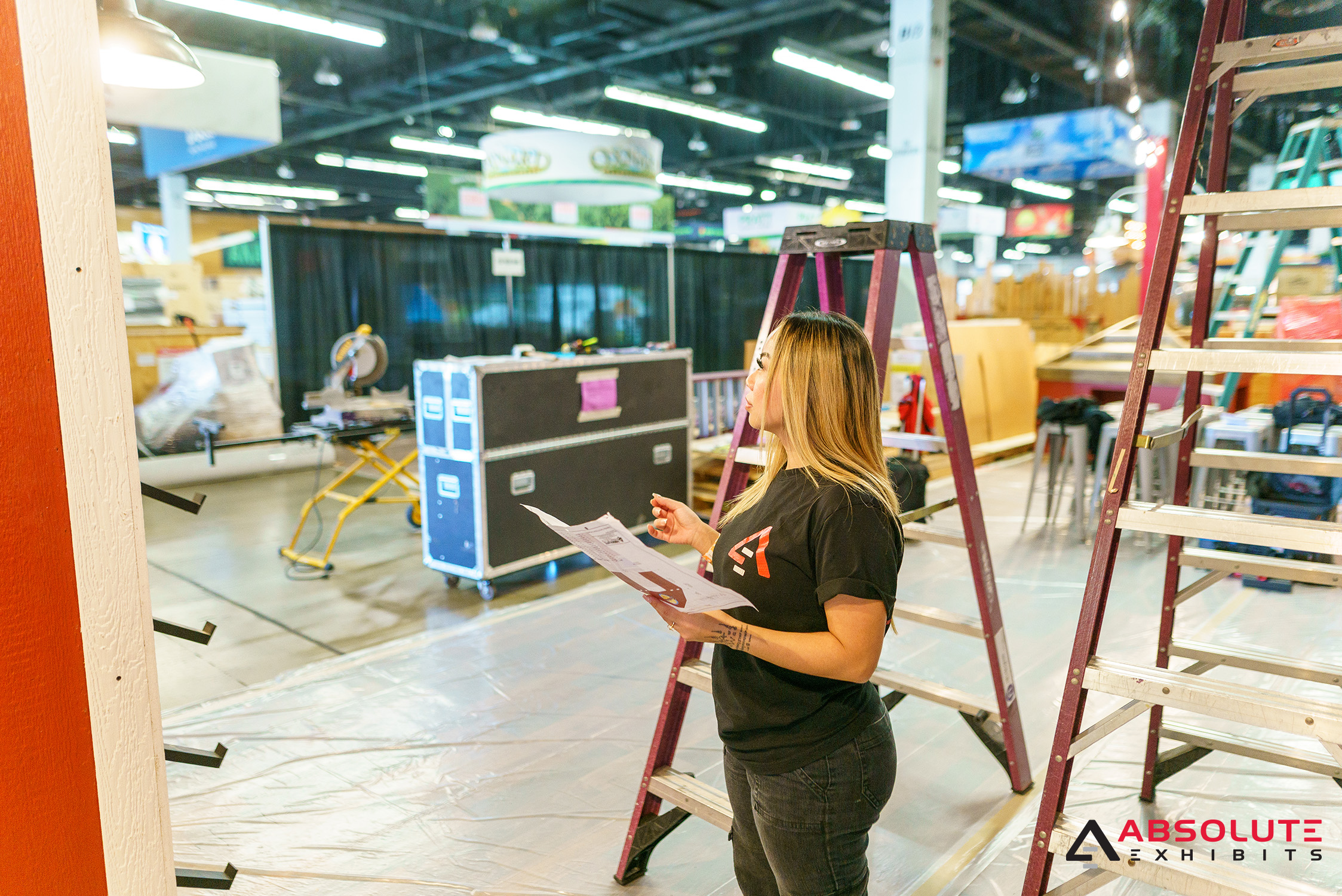
Why AR and VR Belong on the Trade Show Floor
Virtual reality (VR) and augmented reality (AR) blur the line between digital and physical experiences. They immerse users in realistic settings and allow them to interact with products in new ways. While AR and VR aren’t yet commonplace on every trade show floor, that makes them a perfect opportunity—unique technology attracts traffic and leaves lasting impressions.
Virtual reality and augmented reality trade show ideas include visualization, hands-on training, games, technology demos, product line displays, and customization features that engage attendees and boost ROI.
Here are six strategies to inspire your next event.
1. Visualization
Show prospects how your product looks in their world. AR apps can project furniture into a living room, or exterior siding onto a home. IKEA has used AR to demonstrate furniture layouts—an approach any exhibitor can adapt.
2. Hands-On Training
VR simulations allow attendees to practice with machinery or tools safely. Complex products become easier to understand, and buyers gain confidence. Walmart has used VR for employee training, proving its effectiveness.
3. Drive Booth Traffic
Gamified VR and AR experiences draw crowds. A sports brand could let visitors play virtually with new equipment. Even when games are playful, tying them back to your brand creates engagement that converts.
4. Demonstrate New Technologies
Give prospects a preview of what’s next. Medical professionals can try new equipment in a VR operating room, or architects can walk through virtual buildings. Demos like these show value in ways static displays cannot.
5. Bring Entire Product Lines
Booth space is limited, but AR and VR let attendees browse entire digital catalogs. Buyers can view every SKU, color, and variation without requiring more physical space.
6. Customization
Customization deepens engagement. Let attendees change colors, swap features, or create their own version of a product. At SXSW, McDonald’s allowed visitors to “paint” the inside of a Happy Meal box with VR, tying fun directly to brand identity.
Use Case Matrix: Virtual Reality and Augmented Reality Trade Show Ideas
| Idea | Example | Impact |
|---|---|---|
| Visualization | AR shows a couch in a visitor’s home | Helps buyers imagine ownership |
| Hands-On Training | VR demo for complex machinery | Builds confidence and accelerates sales |
| Drive Traffic | VR sports challenge in-booth | Attracts attention and keeps crowds engaged |
| Demo Tech | VR medical operating room | Shows innovation and creates credibility |
| Product Lines | AR catalog browsing | Expands offerings beyond booth space |
| Customization | Visitors personalize products in AR | Strengthens emotional connection to brand |
Why It Matters
Immersive AR and VR experiences only work when they are thoughtfully tied to a brand’s story. The best booths integrate technology with design so it feels seamless, engaging, and memorable. At Absolute Exhibits, we’ve seen firsthand how aligning VR/AR with booth design can transform these ideas into powerful experiences that draw traffic and spark authentic engagement.
The Bottom Line
Trade shows are crowded and competitive. AR and VR can set your booth apart, whether you use them for visualization, training, gamification, demos, catalogs, or customization. With smart planning and the right partner, virtual reality and augmented reality trade show ideas can turn your booth into an experience attendees won’t forget.
Writer Credit:
Lexie Lu is a graphic designer and writer. Most days you can find her creating new graphics in her studio with a large coffee in close proximity. She is the owner of Design Roast and can be followed on Twitter @lexieludesigner.



